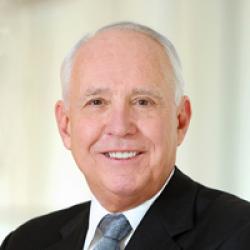We all have been on an airplane or at a social event where the person next to you asks what you do.
I answer that I work with an association that represents medical schools and teaching hospitals. Often, people have not heard of the AAMC, but will share a positive experience they had at one of our institutions. It is always gratifying to hear the praise, although I know that anecdotal information is not a scientific way to gauge how we are doing.
Twenty-two years ago, the AAMC began taking the pulse of people across the country using more reliable, quantitative means. Under the leadership of then-president Jordan Cohen, the AAMC set out to assess the public’s perceptions of academic medicine. The intent was to gather opinions not only from patients but also from voters, who are central to the outcome of many legislative, regulatory, and other governmental challenges and opportunities facing our institutions.
In 1996, the AAMC asked Public Opinion Strategies, one of the nation’s leading polling firms, to help us with this task. They have continued to assist us in producing a public opinion survey every other year since then.
For the 2017 survey, we tapped 1,800 registered voters around the country. If you have not seen the results yet, here comes the spoiler. Our medical schools and teaching hospitals both achieved their highest favorability ratings in 20 years — 72% and 69%, respectively.
At a time when many other institutions have experienced declines in public trust or their favorability remains low, our high favorability ratings this year are a ringing tribute to your efforts.
Respondents said that teaching hospitals outperform other hospitals on 15 of the 16 attributes we asked about. “Medical innovation,” “Availability of latest treatments,” and “Availability of cutting-edge technology and equipment” were the top reasons given.
In addition, 92% of those surveyed said that medical schools are doing an “excellent” or “good” job in training doctors in medical knowledge — a 7% increase from our 2010 findings. I was especially pleased that respondents also noted we are doing a significantly better job of teaching bedside manner to our learners — a result paralleling our greater focus on competency domains such as professionalism and interpersonal communication. In 2017, 81% of those taking the survey rated medical schools as “excellent” or “good” in teaching bedside manner. The ratings of “fair” or “poor” on this topic declined from 32% in 2010 to 19% in this survey.
In contrast to our findings, Gallup’s 2017 annual poll of 14 major institutions — such as Congress, public schools, and banks — found that the public’s level of confidence in them stood at only 35% overall. At a time when many other institutions have experienced declines in public trust or their favorability remains low, our high favorability ratings this year are a ringing tribute to your efforts.
Are we communicating our mission effectively?
The information we cull from this survey helps the AAMC communicate more effectively about our members and their missions. For instance, we know from survey after survey that the public recognizes us when we call ourselves “medical schools” and “teaching hospitals.” The term “university hospital” also rated highly. People are far less familiar with the terms “academic medical centers” and “academic health centers.”
Seven out of 10 voters we surveyed believe that teaching hospitals provide added value for patients over other types of hospitals. The top reasons they cited are: 1) more people weighing in on diagnoses, 2) their expertise in educating and training new doctors, and 3) providing the latest information and cutting-edge techniques.
In addition, we have done a good job making the public aware that medical research has led to new treatments and cures for diseases once considered incurable. The survey results showed that people recognize that medical research is helping Americans lead longer, healthier lives. Four out of five respondents said medical research offers patients hope and that there is a return on investment for research funding.
As we enjoy the confidence of the public, we must continue to share news through as many vehicles as possible about the contributions our nation’s medical schools and teaching hospitals make to improve the health of all Americans.
The takeaway is that, when communicating the value of academic medicine, it behooves us to focus on the role of medical schools and teaching hospitals in driving innovation that improves patient health. The introduction of the AAMC campaign Research Means Hope was launched to spread the message that medical research performed at our medical schools and teaching hospitals really does have a tremendous impact on patient care.
There are opportunities, however, for us to do better outreach on sharing key information. As medical professionals, we have seen the evidence that health insurance coverage is a determinant of health. I believe our credibility with voters helped last year during the Affordable Care Act “repeal and replace” debate when we spoke out on the importance of having access to health coverage to ensuring good health for all.
There is one more important point to remember. After we educated survey participants further about what makes teaching hospitals unique and valuable, they were more likely to say they would select a health plan that included a teaching hospital. As such, I am grateful for the readiness of our leaders to write op-ed columns, as well as for our faculty, residents, and students who use social media to tell our story. As we enjoy the confidence of the public, we must continue to share news through as many vehicles as possible about the contributions our nation’s medical schools and teaching hospitals make to improve the health of all Americans.
When I reflect on this report overall, I am proud of the broad public support that our institutions inspire. Not only did respondents tell us academic medicine is doing a good job, but 60% or more said they support funding increases for our institutions in the areas of research, clinical treatment, critical medical services, and training new doctors. The good will and trust we have earned with the public is a credit to all of you.
The full public opinion research report is available online to view for AAMC members.

